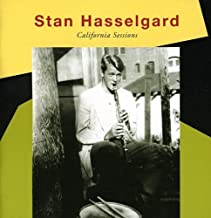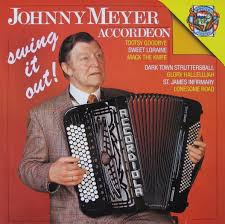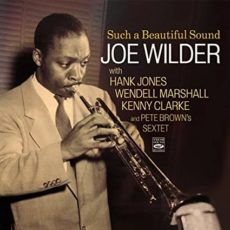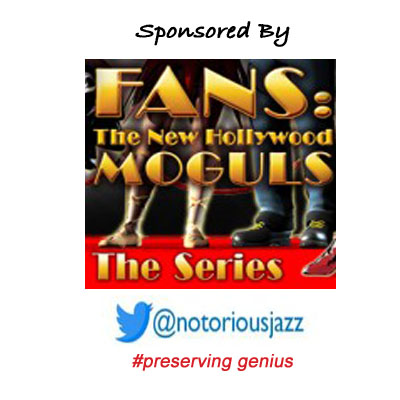
Daily Dose Of Jazz…
Sten Åke Henry “Stan” Hasselgård was born on October 4, 1922 in Sundsvall, Sweden. His father, John Levin Johansson changed his name to John Hasselgård. Growing up in Bollnäs, Sweden, he began playing clarinet at age 16, attended the University of Uppsala, and played in the Royal Swingers there.
In 1945 he played in a quintet led by Arthur Österwall, and founded a new Royal Swingers group that same year. In 1946-47 he played with Simon Brehm’s sextet alongside pianist Gösta Eriksson, trumpeter Bror Hansson, guitarist Kurt Wärngren, and drummer Bertil Frylmark.
Having achieved international renown, he moved to New York City in 1947, and played on 52nd Street with Jack Teagarden and Max Roach. Under the stage name Stan Hasselgard he made his acclaimed recording of Swedish Pastry. and in 1948 he joined Benny Goodman’s septet, alongside Wardell Gray, Mary Lou Williams and others.
His last recording session took place on November 18th, because five days later he was killed in a car crash. Clarinetist Stan Hasselgard passed away on November 23, 1948 in Decatur, Illinois. He was 26.
More Posts: bandleader,clarinet,history,instrumental,jazz,music

Daily Dose Of Jazz…
Johnny Meyer or Johnny Meijer was born Jan Cornelis Meijer on October 1, 1912 in Amsterdam, Netherlands. He began playing accordion as a child and before World War II was playing in Dutch big bands. The post-war years were fertile for him and the liberating sound of his swing accordion, opened opportunities for him to record many swing standards from 1952 to 1957.
He toured Europe but mainly performed in the Netherlands and for a time was known as a virtuoso jazz accordionist. Besides the popular songs, Meyer also played fast swing numbers, Romanian music and classical pieces. In 1974 he recorded the Dutch Swing College Band Johnny Goes Dixie LP, which went gold.
Typically seen during performances with a cigar in his mouth, his accordion showed several burn marks as a result of this. In the last years of his life, Johnny Meyer was rarely invited to play large performances, mainly in connection with his short temper and his drinking, and thus the King of the Accordion saw out his final days mostly in silence, reduced to occasionally playing weddings and parties.
Accordionist Johnny Meyer, who played jazz, swing, classical, folk and was the subject of a film, passed away on January 8, 1992 in Amsterdam.
More Posts: accordion,history,instrumental,jazz,music

Daily Dose Of Jazz…
Roy Willox was born August 31, 1929 in Welwyn, Hertfordshire, England into a musical family in 1929. At 16 he initially played with Johnny Claes for a short time in 1945 and then worked in other well-known bands before joining the Ted Heath Orchestra for a five-year stint from 1950 to 1955. During this time he also worked in a band with Keith Christie.
A collaboration with Jack Parnell and other bands led to extensive freelance in television, radio and theater. In the field of jazz, he was part of Harry South’s band in the 1960s and 1970s. This period of performing saw him occasionally returning to the Heath band throughout the 1990s and 2000s, playing the Ted Heath Bands farewell concert at London’s Royal Festival Hall in 2000.
In his later years Roy worked with Kenny Baker, the Robert Farnon Orchestra, and Laurie Johnson’s London Big Band. 2009 with the all-star formation The Allan Ganley Jazz Legacy. He was involved in 156 jazz recording sessions between 1951 and 2016 with Cleo Laine, Larry Page, George Chisholm, Beryl Bryden, Johnny Keating, Tubby Hayes, Kenny Clare, Dudley Moore, Louie Bellson, The London Jazz Chamber Group, Michel Legrand, Phil Woods, and the Len Phillips Big Band.
As a session musician, he is also in pictures of Bert Kaempfert, Tiny Tim ~ Live! At the Royal Albert Hall, and Harry Nilsson ~ A Little Touch of Schmilsson in the Night. Alto saxophonist Roy Willox, who also plays clarinet and flute, passed away on November 25, 2019.
More Posts: clarinet,flute,history,instrumental,jazz,music,saxophone

Daily Dose Of Jazz…
James Charles Heard, known as J. C. Heard was born on August 10, 1917 in Dayton, Ohio and grew up in Detroit, Michigan. As a young child, he performed as a tap dancer in amateur contests and vaudeville shows. He began to switch his focus to drumming around age 11 and started out teaching himself to play, then took lessons as a student at Cass Technical High School. Supporting his interest, his parents brought him to see major performers who toured to Detroit’s famous music venues, however, it was Chick Webb play in 1937 as a formative experience.
Becoming a protege of the drummer Jo Jones, through him he met and sat in with Count Basie. With Jones’s help, Heard got his first professional job with Teddy Wilson’s band in 1939. They played the Golden Gate Ballroom in Harlem and the Roseland Ballroom and recorded for Columbia Records. After the Wilson band’s breakup, he went on to perform in bands led by Benny Carter, Louis Jordan, Louis Armstrong, Benny Goodman, Duke Ellington, Woody Herman, and Dizzy Gillespie. He also performed at major jazz festivals and played alongside Roy Eldridge and Charlier Parker.
Heard’s style was a hybrid of swing and bop and was known for his innovative techniques and the hard swing he would bring to both large and small bands. He recorded with Charles Mingus, Ray Brown, Billie Holiday, Ray Charles, Nat King Cole, Dinah Washington, Lena Horne, and Sarah Vaughan. He also led his own bands, including a quintet that played at Cafe Society and a trio with Erroll Garner and Oscar Pettiford. Performing as a featured member of Cab Calloway’s band from 1942-1945, he appeared in several Hollywood films, including Stormy Weather.
During the Fifties Heard toured with Norman Granz’s Jazz at the Philharmonic in the 1950s and after a successful engagement in Japan in 1953, stayed for many years performing and teaching. Returning to New York in 1957, J.C. played with the Coleman Hawkins-Roy Eldridge Quintet and with Teddy Wilson’s trio. In 1966 he moved back to Detroit where he was influential as a bandleader and a mentor to younger musicians. In 1983, he again recorded an album as a leader, accompanied by saxophonist George Benson, pianist Claude Black, and Dave Young on bass. In 1981, Heard started a 13 piece big band which played around the state and at festivals, often featuring Dizzy Gillespie and other colleagues. This group recorded in 1986 and continued performing regularly until his death.
Drummer J. C. Heard passed away from a heart attack on September 27, 1988 at the age of 71 in Royal Oak, Michigan. His legacy is honored with a yearly jazz drumming competition held as part of the Detroit Jazz Festival.
More Posts: bandleader,drums,history,instrumental,jazz,music

Daily Dose Of Jazz…
Rudy Collins was born on July 24, 1934 in New York City, New York. He played trombone in high school and started on drums at that time as well. From 1953 to 1057 he studied with drummer Sam Ulano.
He began gigging in New York City, playing with Hot Lips Page, Cootie Williams, Eddie Bonnemere, Dizzy Gillespie, Johnny Smith, Carmen McRae, Cab Calloway, and Roy Eldridge. At the Newport Jazz Festival, Rudy performed with J.J. Johnson and Kai Winding.
Later in the 1950s, Collins became increasingly interested in the budding free jazz scene, in addition to playing with more traditional ensembles. He worked with Herbie Mann from 1959 and later with Cecil Taylor, Quincy Jones, Dave Pike, and Lalo Schifrin.
He recorded with Ahmed Abdul-Malik, Gene Ammons, Ray Bryant, Billy Butler, Junior Mance, James Moody, the Jimmy Owens-Kenny Barron Quintet, Randy Weston, and Leo Wright. Drummer Rudy Collins, whose last recordings were in 1981, passed away on August 15, 1988.
More Posts: drums,history,instrumental,jazz,music




